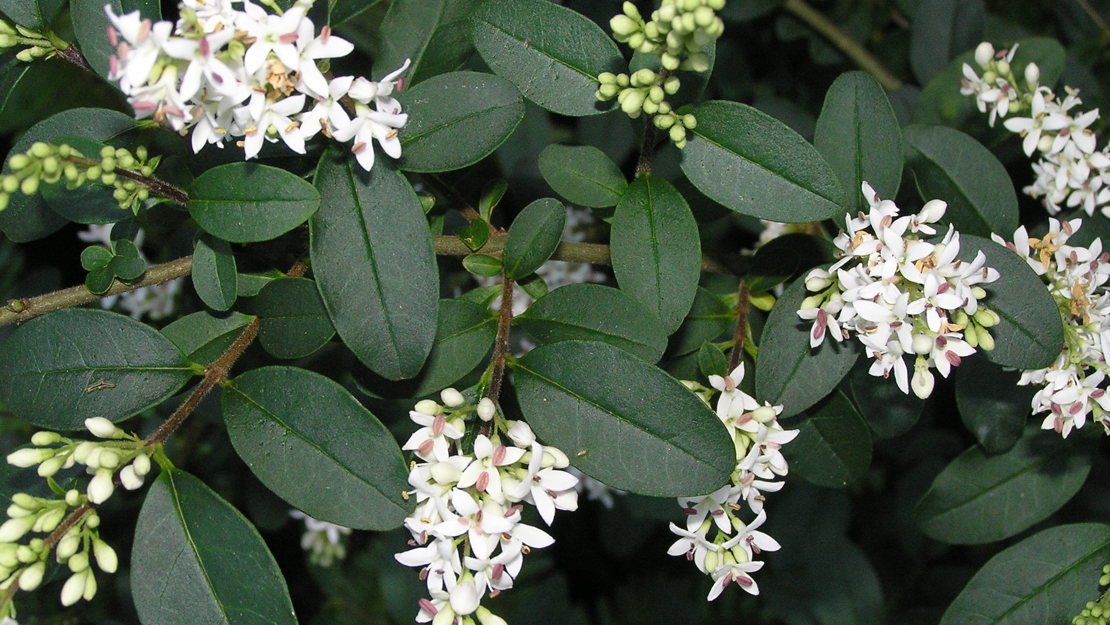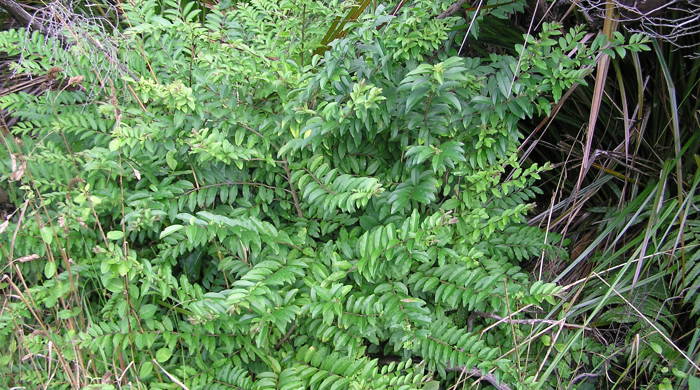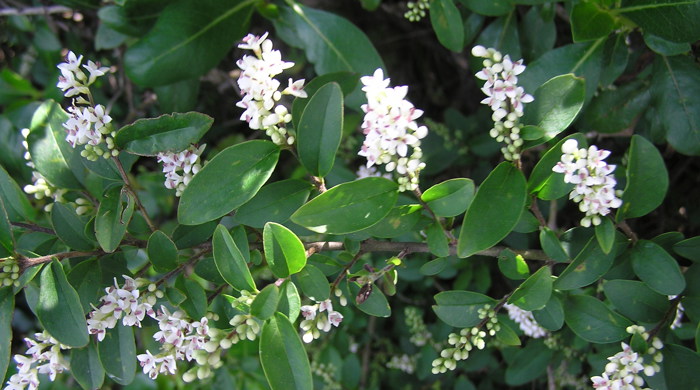Ligustrum sinense
Chinese privet
Family: Oleaceae
Origin: China

Regional Pest Management Plan (RPMP) status
- Parkland with Significant Ecological Areas — Site-led (on-park only)
- Whole region — Sustained control
- Waitākere Ranges Heritage Area priority status
- Hauraki Gulf Controlled Area Notice pest
General description
Evergreen or semi-deciduous shrub to small tree, < 5 m tall. Flowers are fragrant, tubular, white with purple/mauve anthers and borne in spring – summer. Fruit is purple/black and ripens in autumn.
What you need to know
To help protect our environment:
- You must not breed, distribute, release or sell Chinese privet within the Auckland region.
- You must not plant Chinese privet within the Auckland region, unless you are transferring an existing plant on your land to another location within the boundaries of the same property.
- You must destroy any Chinese privet on land that you occupy if it has been planted in breach of the above rules and you are directed to do so by an authorised person.
Habitats
Hedgerows, lowland and coastal forest, shrubland, disturbed sites, roadsides, wastelands, wetlands.
Dispersal
Seeds dispersed by birds.
Impact on environment
Forms dense stands, displacing native vegetation and preventing seedling establishment. Dominates canopy, altering vegetation structure and diversity. May cause an allergic reaction in some people, often as a cross-reactivity to main allergens.
Control
Site Management
Follow up treated areas 3 times per year. Encourage natural regeneration of native plants or replant treated areas where possible after 2-3 treatments to establish dense ground cover and minimise reinvasion.
Recommended approaches
Physical control
Method: Dig out.
Plant parts requiring disposal: Seeds.
Disposal options: Remove to greenwaste or landfill if practical.
Biocontrol
Check for presence of agents: Privet lace bug (Leptopha hospita).
For more information about how biocontrol works, see What is biocontrol?
Community agrichemical control recommendations
No qualifications: Cut stump and paste freshly cut base of stems with metsulfuron gel or ringbark stem and paste with metsulfuron gel.
Basic Growsafe certified: Cut stump and spray freshly cut base with 5g metsulfuron-methyl per 1 L of water.
Certified Handler/Experienced agrichemical user: Drill and inject trees with 10g metsulfuron-methyl per 1L of water if safe to do so. Drill 18mm holes (tangentially angled downwards) in a spiral up the trunk. For 50mm stems drill one hole. For 100mm stems drill two holes. For larger stems drill holes 150mm apart. Foliar spray seedlings with 5g metsulfuron-methyl per 10L of water and 20ml penetrant.
Safety notes
Large trees must not be ringbarked or drilled that are closer than 1.5 times the height of the tree from paths, walkways and property.
Trees over 4 metres in height should be removed by a qualified arborist.
Caution: When using any herbicide or pesticide please read the label thoroughly to ensure that all instructions and safety requirements are followed.





